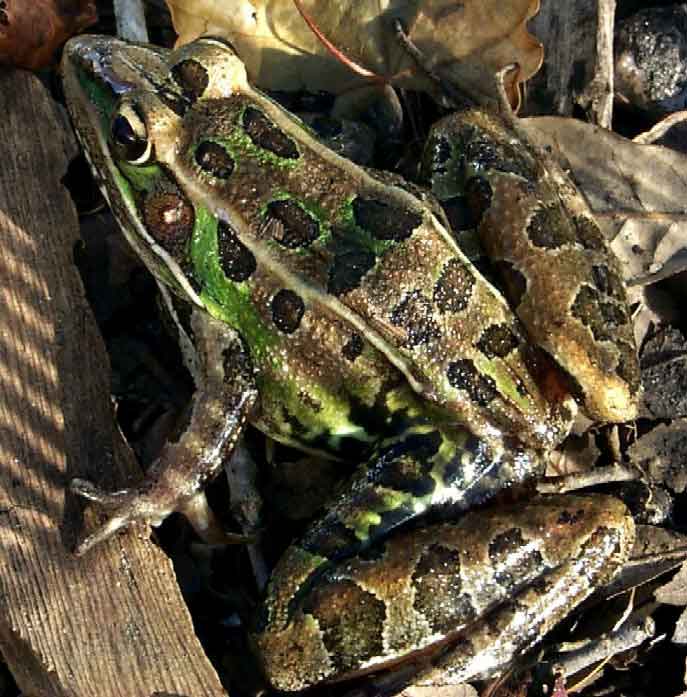Southern Leopard Frog (Lithobates sphenocephalus) - Wiki Southern Leopard Frog
From Wikipedia, the free encyclopedia
[Photo] Southern Leopard Frog (Lithobates sphenocephalus). From: http://cars.er.usgs.gov/Education/sldshw/herpetology/slides.html (slide 13)
The Southern Leopard Frog (Lithobates sphenocephalus, previously Rana sphenocephala) is a species of mostly aquatic true frog, found in the south-eastern third of the United States. There are two accepted subspecies.
Physical description
The Southern Leopard Frog is generally green or light brown in color, with dark brown or black blotching (that is the origin of their common name). They grow to 3½ inches (90 mm) in length and have a pointed snout.
Ecology and behavior
This species prefers shallow, freshwater habitats, such as streams, ponds or lakes, with plenty of vegetation for camouflage. They are mostly nocturnal, and carnivorous, consuming almost any kind of insect they can catch and fit in their mouth, including earthworms, spiders and centipedes. They are excellent jumpers, and typically escape predation by leaping into the water and swimming to the bottom. Breeding occurs year around, as long as the temperature permits. Eggs are laid in a clutch of several hundred at the bottom of shallow water. Tadpoles hatch and remain in the fully aquatic form for approximately 90 days, feeding on algae and rotting plant matter.
Subspecies
Florida Leopard Frog, Lithobates sphenocephalus sphenocephalus (Cope, 1886)
Southern Leopard Frog, Lithobates sphenocephalus utricularia (Harlan, 1825)
http://en.wikipedia.org/wiki/Southern_Leopard_Frog
| The text in this page is based on the copyrighted Wikipedia article shown in above URL. It is used under the GNU Free Documentation License. You may redistribute it, verbatim or modified, providing that you comply with the terms of the GFDL. |
